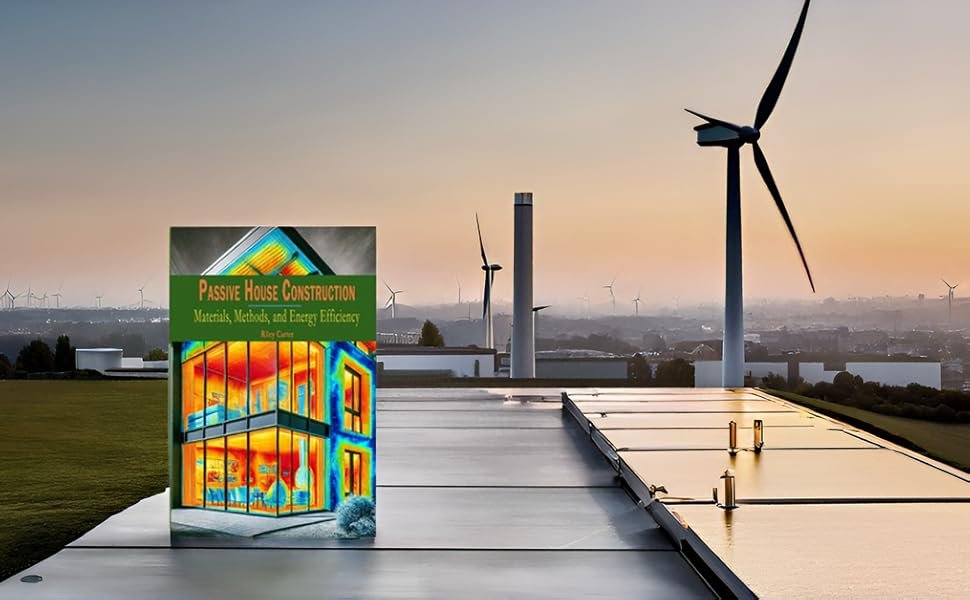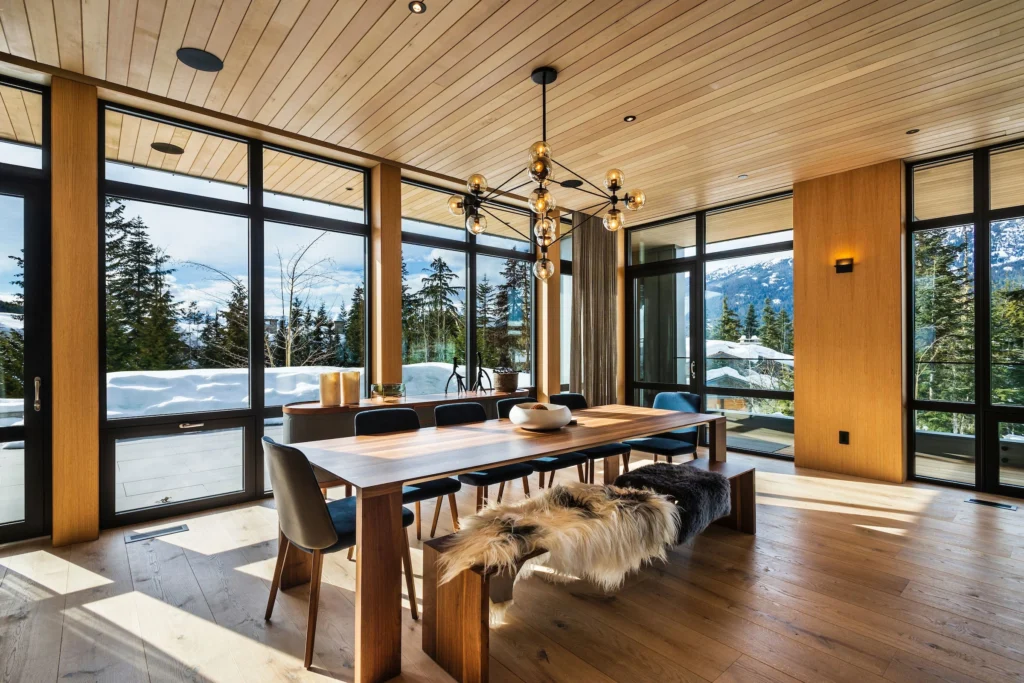Materials matter—and how we put them together matters even more. Too often, conversations about sustainable building focus on design intent or energy targets without grappling with the realities of construction sequencing, thermal continuity, or hygrothermal performance. This book confronts those realities head-on. It’s a technical, systems-based guide to the methods and materials that make Passive House performance possible across climate zones and construction types.

Materials, Methods, and Energy Efficiency
From my earliest site visits as a consultant, I saw how well-meaning decisions could undermine performance if airtightness and insulation strategies weren’t fully integrated from the start. In this book, I break down those strategies into digestible, evidence-based practices. We explore insulation types by material behavior, understand vapor control in layered assemblies, and trace thermal bridges from blueprint to blower door test.
Each chapter connects material science to construction practice: how to select high-performance windows, avoid moisture traps, detail for durability, and align component choices with energy modeling goals. Real-world case studies reveal both the challenges and the breakthroughs—especially in retrofits, where sequencing, phasing, and compromise become part of the craft.
Beyond performance metrics, this book speaks to construction as climate action. Passive House is not just an energy goal—it’s a way to reduce embodied carbon, extend building lifespan, and protect indoor air quality. By choosing materials and methods that support airtight, low-energy construction, we also build for occupant health, resilience, and comfort.
Whether you’re supervising trades on-site or specifying materials in a design studio, this book is intended to support your work with rigor and clarity. Passive House Construction is the manual I wish every project team had from day one: grounded in science, attuned to the realities of building, and committed to the highest standards of sustainable practice.
Riley Carter
In the world of sustainable architecture, one truth is becoming increasingly clear: materials matter. But beyond the choice of what to use, what truly defines a high-performance building is how materials are integrated—how they interact with the climate, manage moisture, and contribute to overall energy performance. In passive house construction, this synergy is everything.
Too often, sustainability discussions focus on design intent or energy targets without addressing construction sequencing, thermal continuity, or hygrothermal behavior. This article tackles those realities head-on, diving into the materials essential for passive house buildings, how to select them, and how to apply them properly.
What Makes a Material “Passive House Ready”?
In Passive House construction, materials must do more than look good on a datasheet. They have to perform as a system. That means:
Exceptional thermal insulation
Airtight and moisture-smart behavior
Low embodied carbon
Durability over decades—not years
From insulation and membranes to windows, glues, gaskets, and structural systems, every detail contributes to—or undermines—energy performance. My approach in both the book and the field has always been this: no detail is too small if it affects the envelope.
High-Performance Insulation: The Backbone of Efficiency
Insulation isn’t just a line item. It’s the most powerful tool we have to reduce operational energy. But not all insulations are created equal—or installed equally well.
Here’s what I work with most often:
Dense-packed cellulose – cost-effective, recycled, excellent cavity fill.
Mineral wool and wood fiber boards – breathable, durable, and great for continuous insulation.
Natural options like hemp and sheep wool – fantastic for retrofits and carbon-sensitive projects.
VIP panels and aerogels – reserved for space-constrained retrofits or deep energy upgrades.
What matters just as much as R-value? Installation quality. Compression, gaps, or poor transitions can destroy performance. That’s why Passive House demands continuous insulation and zero tolerance for thermal bridges.
Airtightness and Smart Vapor Control: Non-Negotiables
In the Passive House world, air leaks aren’t minor flaws—they’re deal-breakers. Uncontrolled air movement undermines everything from heating performance to moisture safety.
To get the performance I demand, I rely on:
Intelligent vapor-variable membranes – they adapt based on humidity, helping walls dry to the correct side.
High-performance tapes and sealants – these aren’t hardware store products. They’re critical control layer components.
Blower door testing – not just at the end, but as part of an iterative quality control process.
I’ve seen beautiful buildings that fail badly simply because air control wasn’t respected. In Passive House construction, airtightness is performance, comfort, and durability—all rolled into one.

Designing Out Thermal Bridges
Every thermal bridge is a leak in the envelope, and every leak costs you—both in energy and risk.
Over the years, I’ve developed detailing strategies to:
Break structural connections cleanly, using thermal spacers and insulation layers
Avoid slab-edge losses, balcony cantilevers, and framing intersections that short-circuit insulation
Model every connection in WUFI or THERM before ever breaking ground
There’s no shortcut here. You either design out the bridge, or you live with the consequences. My advice? Design it right the first time—it’s cheaper than fixing it later.
Choosing Materials that Support Climate Goals
Passive House is more than energy—it’s construction as climate action. That means I take a hard look at the embodied carbon of every material I specify.
Some of the standouts I use:
Wood fiber, cellulose, cork – natural, high-performance, low-carbon.
CLT and mass timber – strong, beautiful, and carbon-sequestering.
Hempcrete, mycelium panels, biochar concretes – the future is growing beneath our feet.
Sustainable materials aren’t just nice—they’re necessary. Especially as we aim to build carbon-neutral or even carbon-positive buildings.
Lifecycle Thinking and Real-World ROI
I don’t believe in expensive green bling. I believe in smart, long-term investment. Materials need to:
Perform over decades, not years
Require little maintenance
Be safe to handle, repair, and recycle
That’s why my projects prioritize durability, modularity, and disassembly. A material that saves you 10% up front but needs replacing in ten years isn’t efficient—it’s a liability.

Why I Believe Passive House Is the Future
Passive House is more than an energy strategy. It’s a framework for:
Healthy, quiet, resilient spaces
Low-cost, high-performance buildings
A future that isn’t fossil-fueled
And it’s one we can implement today. Whether I’m working on a retrofit, a multi-family project, or a single-family new build, the principles stay the same. My job—and passion—is helping teams translate these ideas into reality.
Build Smart, Build Passive
This article is more than a summary—it’s a manifesto.
Every chapter of my book is grounded in this idea: performance doesn’t happen by accident—it’s built layer by layer. From smart insulation choices to vapor-aware membranes, from triple-glazed windows to zero-carbon materials, I’ve written this guide for those who want to get it right.
So whether you’re designing Passive Houses or building them with your hands, I hope what I’ve shared helps you work better, smarter, and with a clearer purpose.
Because the future of building isn’t just efficient.
It’s Passive, and it’s personal.
— Riley Carter
